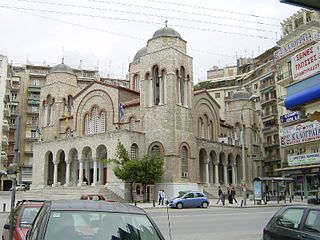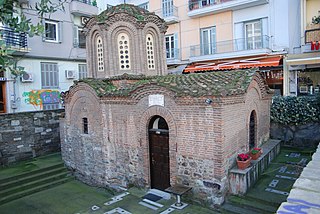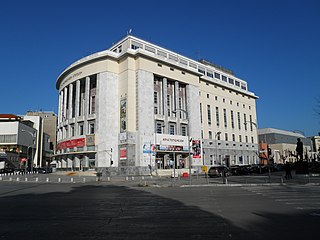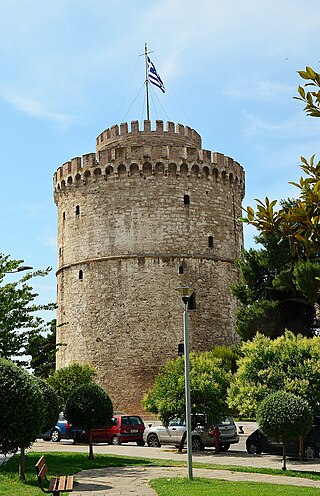Self-guided Sightseeing Tour #4 in Thessaloniki Municipal Unit, Greece
Legend
Guided Free Walking Tours
Book free guided walking tours in Thessaloniki Municipal Unit.
Guided Sightseeing Tours
Book guided sightseeing tours and activities in Thessaloniki Municipal Unit.
Tour Facts
1.7 km
49 m
Experience Thessaloniki Municipal Unit in Greece in a whole new way with our free self-guided sightseeing tour. This site not only offers you practical information and insider tips, but also a rich variety of activities and sights you shouldn't miss. Whether you love art and culture, want to explore historical sites or simply want to experience the vibrant atmosphere of a lively city - you'll find everything you need for your personal adventure here.
Activities in Thessaloniki Municipal UnitIndividual Sights in Thessaloniki Municipal UnitSight 1: Ιερός Ναός Παναγίας Δέξιας

The Church of Panagia Dexia is a parish church of Thessaloniki and belongs to the Holy Metropolis of Thessaloniki. It is located on Egnatia Street, in the city center. The architectural type of the church is cruciform with a dome and two bell towers.
Sight 2: Arch of Galerius
One of the most characteristic monuments of Thessaloniki is the Triumphal Arch of Galerius, also known as Kamara, located on the upper side of Egnatia Street and a short distance from the Rotunda. It is one of the most famous meeting points for residents and visitors of the city.
Sight 3: Church of the Metamorphosis of the Sotir

The Church of the Transfiguration of the Saviour is a 14th-century Byzantine chapel in Thessaloniki, Greece. It is a UNESCO World Heritage Site as one of the Paleochristian and Byzantine monuments of Thessaloniki.
Sight 4: Sculpture TIF
The Sculpture Cor-ten or Sculpture DETH is an artwork of the Greek sculptor George Zongolopoulos that was placed to the northern entrance of the Thessaloniki International Fair (DETH) in 1966.
Sight 5: National Theatre of Northern Greece
The National Theatre of Northern Greece or NTNG is an institution promoting performing arts primarily in Thessaloniki and Northern Greece, founded in 1961.
Sight 6: White Tower of Thessaloniki
The White Tower of Thessaloniki is a monument and museum on the waterfront of the city of Thessaloniki, capital of the region of Macedonia in northern Greece. The present tower replaced an old Byzantine fortification, known to have been mentioned around the 12th century, that the Ottoman Empire reconstructed to fortify the city's fortress some time after Sultan Murad II captured Thessaloniki in 1430. During the period of Ottoman rule, the tower became a notorious prison and the scene of numerous mass executions, most famously of the Janissaries who revolted during the reign of Mahmud II.
Share
How likely are you to recommend us?
Disclaimer Please be aware of your surroundings and do not enter private property. We are not liable for any damages that occur during the tours.
GPX-Download For navigation apps and GPS devices you can download the tour as a GPX file.


